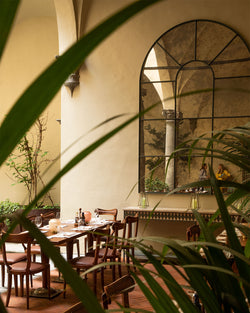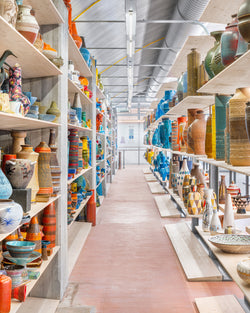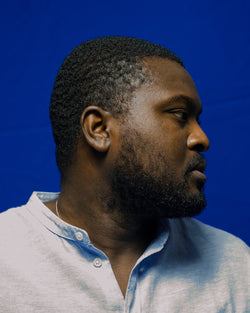Victoria Episcopo became a furniture designer entirely by accident. After writing a thesis on contemporary art in Mexico for six months, she got the news that her beloved grandma had died. Episcopo returned to her grandparents’ house in Salento, Puglia, just in time for Christmas, and walked into her grandmother’s now-vacant studio. “I found the top of the tables white, ready to be painted,” she says. “So I thought to myself, ‘Let's try to do it.’” Her grandmother had loved to paint in the 1970s — particularly on flower-shaped tables made of wood and wrought iron, and now, it was Episcopo's turn to take up the reins. First, she painted small, characterful side tables mimicking different-coloured lilies. Thanks to iron’s incredible malleability, Episcopo made the legs of the tables look like plant stems with leaves as dainty feet. “I like to give the impression that the leaves of the table can move. I call them ballerina's feet,” she says. If you look closely enough, you can also see minute, almost microscopic detail of wasps and bees pollinating the flowers, while the surfaces of the tables themselves appear three-dimensional thanks to painterly optical illusions.
Episcopo soon gravitated towards larger-scale furniture; dining tables mimicking sprawling poppies offered a more expansive option for clients and signified an upscale in production. Friends told Episcopo that she should show her work to Rossana Orlandi, someone she describes as “owning one of the most important design galleries in Europe” and “a star of design in Milan.” Two months later she showed her work with Orlandi at the Salone del Mobile (the highly-esteemed Milan Furniture Fair) in 2015, and the rest is history.






















































